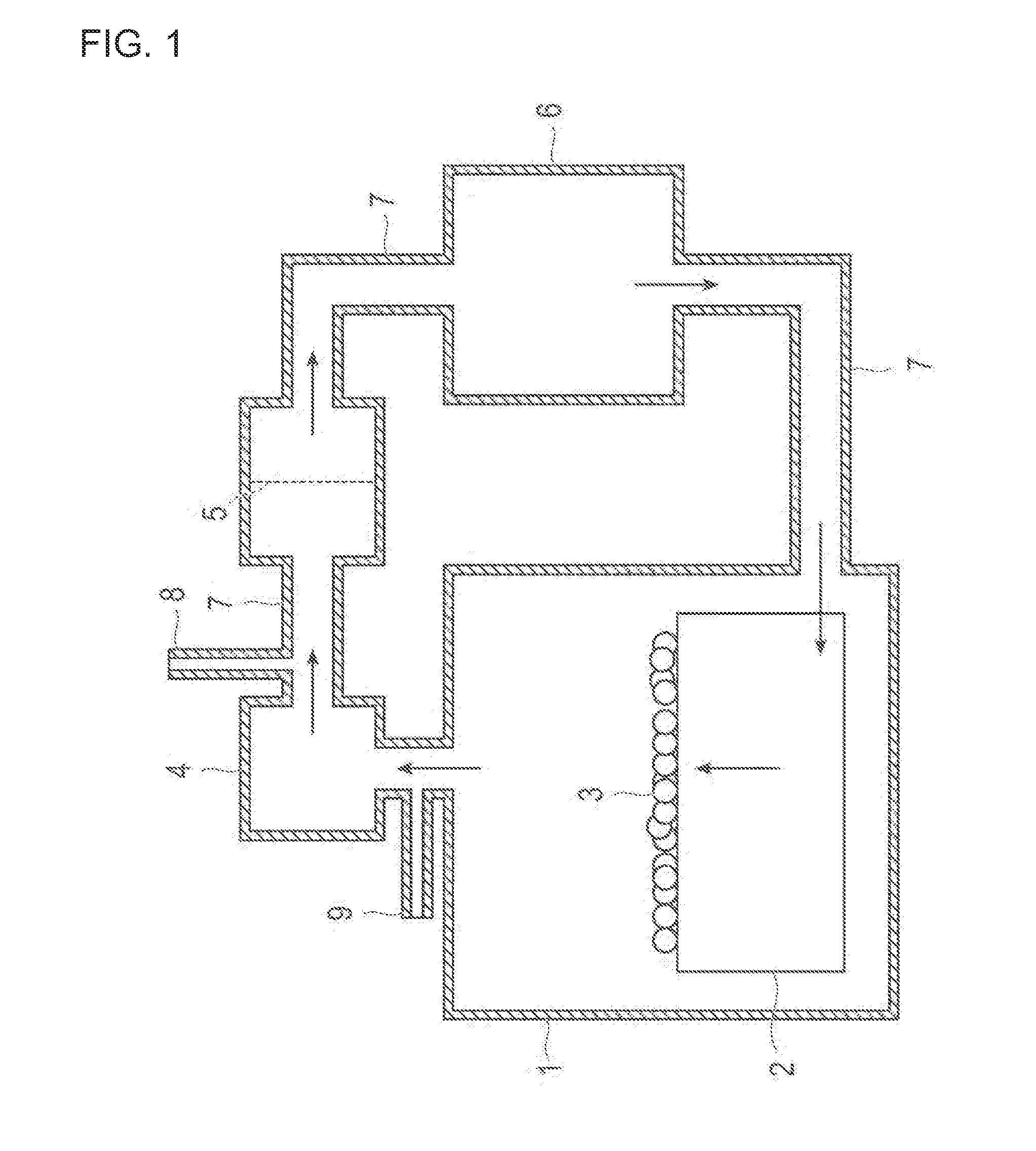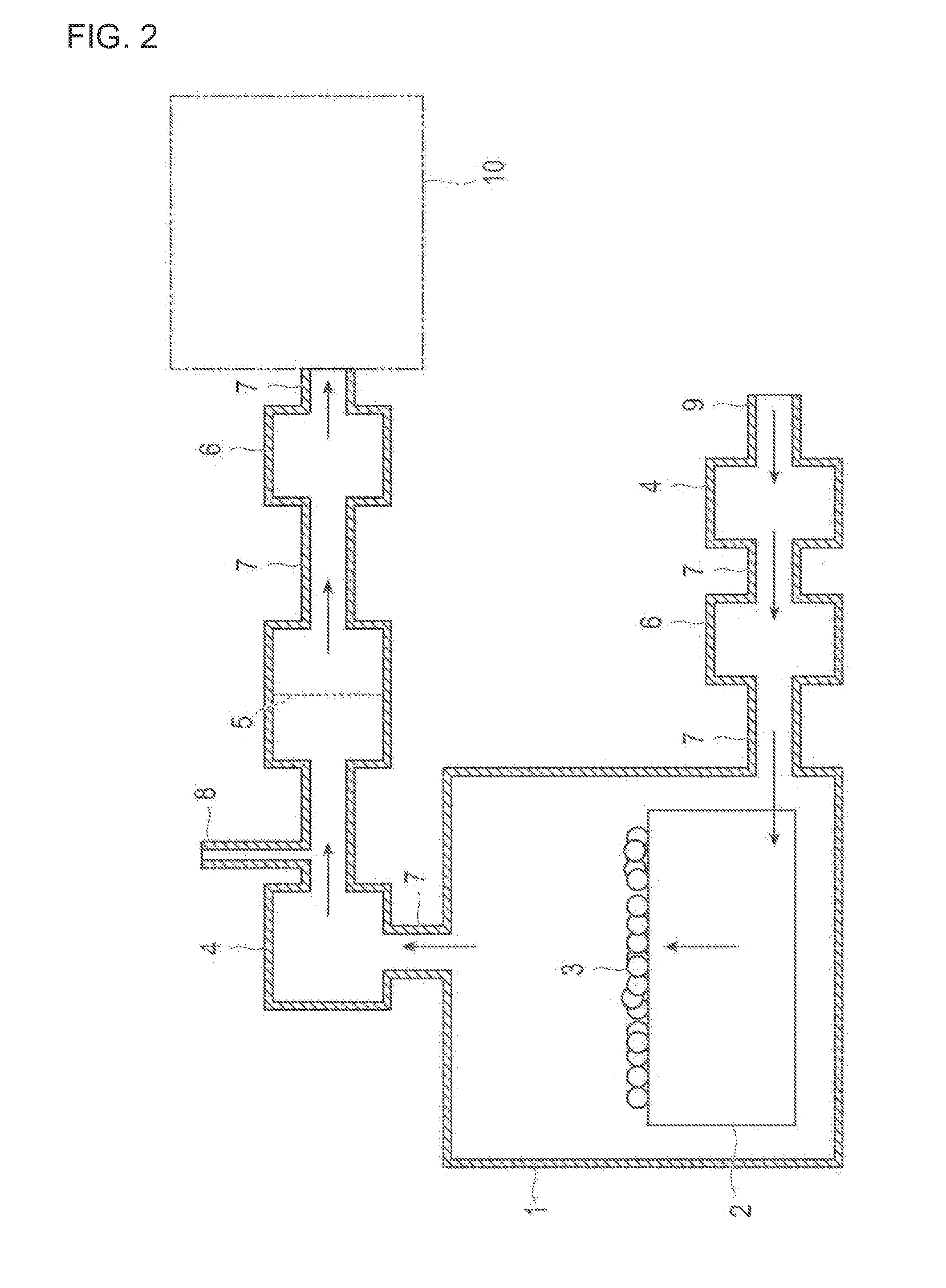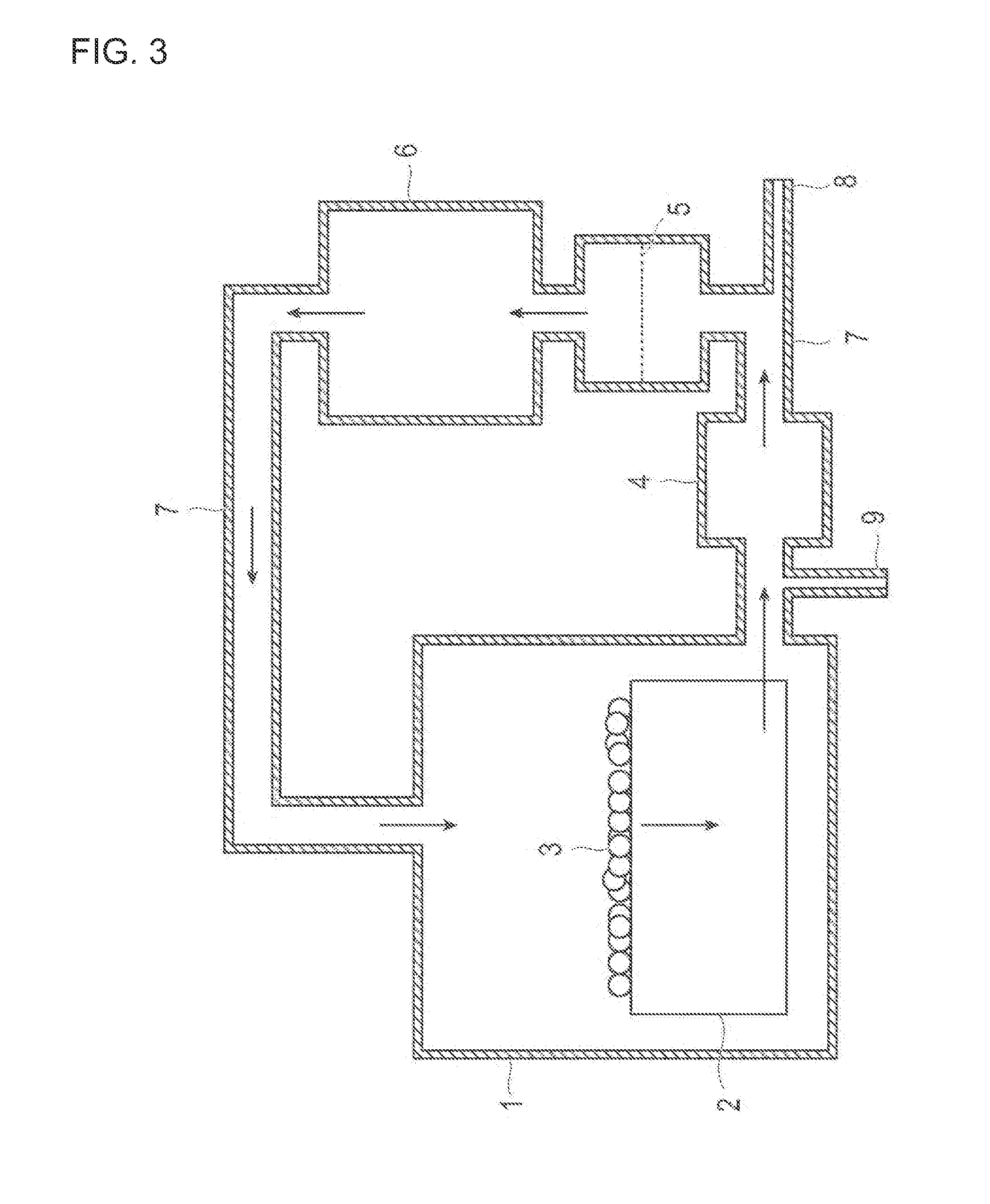Method for producing particulate water absorbent resin
a water absorbent resin and water technology, applied in the direction of drying, lighting and heating apparatus, furniture, etc., can solve the problems of increasing the cost of adding, reducing the production efficiency of water absorbent resins, and consuming large quantities, so as to reduce the incorporation of colored foreign substances, improve physical properties, and produce efficiently
- Summary
- Abstract
- Description
- Claims
- Application Information
AI Technical Summary
Benefits of technology
Problems solved by technology
Method used
Image
Examples
preparation example 1
[0256]An aqueous monomer solution was prepared by mixing acrylic acid (containing 70 ppm of methoxyphenol), a 48 wt % aqueous solution of sodium hydroxide, industrial pure water, polyethylene glycol diacrylate (average molecular weight: 523), and an aqueous solution of trisodium diethylenetriamine pentaacetate, and sodium persulfate was added thereto. The concentration of the monomer component in the aqueous monomer solution was 53 wt %, the neutralization ratio of acrylic acid was 70 mol %, the concentration of polyethylene glycol diacrylate was 0.017 mol % (relative to the monomer component), the concentration of trisodium diethylenetriamine pentaacetate was 50 ppm (relative to the monomer component), the amount of addition of sodium persulfate was 0.017 mol % (relative to the monomer component), and the temperature of the aqueous monomer solution at the time of addition of sodium persulfate was 95° C. Polymerization proceeded rapidly, and a polymer gel was obtained. The polymer g...
example 1
[0257]A batch type hot air dryer having a drying chamber with a diameter of 13 cm and a height of 50 cm (retaining a polymer gel and a dried product on a stainless steel mesh having a mesh size of 300 μm and a ratio of opening area of 36%) was preheated in advance by means of a gas stream (air) flowing upward at a velocity of 2.0 [m / s] and a temperature of 180° C. At this time, the temperature of the heat exchanger was 220° C. Meanwhile, the exhaust line of this dryer was attached with a filter (a mesh having openings with a mesh size of 150 μm, made of stainless steel; opening area per hole=0.02 mm2; ratio of opening area=36% (mesh size: 150 μm, wire diameter: 100 μm)), and the temperature of the gas stream during the passage through the filter was 90° C. Furthermore, the exhaust line was branched after the filter, so that a portion of the gas that had passed through the exhaust line was discharged out of the dryer, while the remaining portion of the gas was designed to be reheated...
example 2
[0261]The polymer gel 1 obtained in Preparation Example 1 was spread on the belt of a ventilated band dryer with a yawing type belt at an almost uniform gel layer height (gel layer height: 70 mm). This ventilated band dryer was composed of six chambers, and the belt speed was controlled so as to have a retention time of 5 minutes for each room, that is, 30 minutes in total. The polymer gel or water absorbent resin was retained by a punching plate in which most of the nearly rectangular holes having a length of 3 mm and a width of 1 mm were opened, and the ratio of opening area was 30%. The area occupancy was 95%. The temperature, flow velocity and flow direction of the hot air (high temperature gas stream) used in each chamber were controlled as follows. Meanwhile, the temperature of the hot air was measured immediately before the contact of the hot air with the polymer gel. The environments in the six chambers of the ventilated band dryer were adjusted as described below.
[0262][Che...
PUM
| Property | Measurement | Unit |
|---|---|---|
| temperature | aaaaa | aaaaa |
| size | aaaaa | aaaaa |
| temperature | aaaaa | aaaaa |
Abstract
Description
Claims
Application Information
 Login to View More
Login to View More - R&D
- Intellectual Property
- Life Sciences
- Materials
- Tech Scout
- Unparalleled Data Quality
- Higher Quality Content
- 60% Fewer Hallucinations
Browse by: Latest US Patents, China's latest patents, Technical Efficacy Thesaurus, Application Domain, Technology Topic, Popular Technical Reports.
© 2025 PatSnap. All rights reserved.Legal|Privacy policy|Modern Slavery Act Transparency Statement|Sitemap|About US| Contact US: help@patsnap.com



